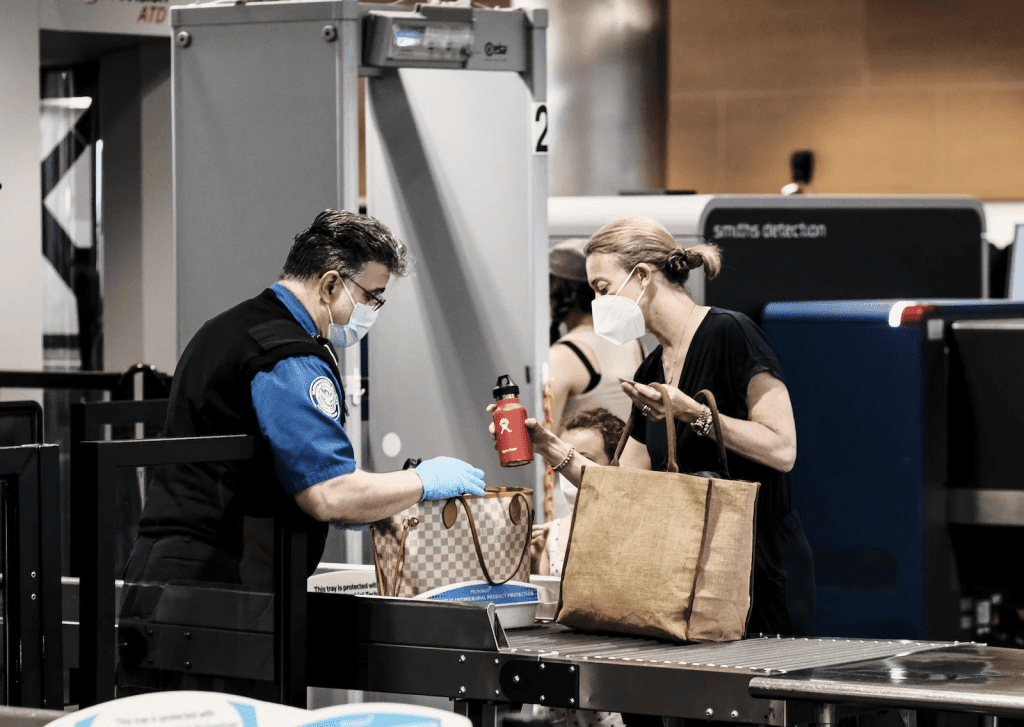When my son’s fiancée was excitedly preparing for her first flight to visit us, she encountered a rather unexpected complication at the airport: an SSSS marking on her boarding pass. This small but significant designation left us baffled, as it seemed to invite a level of security scrutiny beyond the standard. If you or a loved one is puzzled by this code on a boarding pass, you’re not alone. Here’s what SSSS means, why it happens, and how to handle it with ease.
What is the SSSS Code? Understanding the Meaning of Secondary Security Screening Selection

The acronym SSSS stands for “Secondary Security Screening Selection.” The Transportation Security Administration (TSA) uses this designation for passengers selected for extra security checks. If you see an SSSS code on your boarding pass, it means the TSA has flagged you for additional scrutiny. This can involve more thorough screenings, additional questioning, and detailed inspections of your luggage and personal belongings.
While this might seem daunting, it’s important to know that these screenings are part of the TSA’s effort to maintain safe travel for everyone.
Why Might Someone Receive an SSSS Marking?
Several factors can contribute to a passenger receiving the SSSS designation. Here are some common reasons:
1. Random Selection
In some cases, the TSA simply selects passengers at random for further screening. This helps maintain an element of unpredictability in security processes, which is a deterrent for potential threats.
2. Last-Minute or One-Way Ticket Purchases
Buying a ticket at the last minute or purchasing a one-way flight can raise red flags for the TSA. These circumstances sometimes align with patterns observed in security concerns, leading to a secondary screening.
3. International Travel
If you’re traveling internationally, especially to or from regions with heightened security concerns, you’re more likely to encounter an SSSS designation. The TSA applies these extra screenings based on various global security alerts.
4. Unusual Travel Patterns or Past Controversial Travel Destinations
If your travel history shows unusual or erratic patterns, or if you’ve recently traveled to certain countries that are flagged by the TSA, you could be subject to an SSSS marking on future flights. Sometimes, travelers with incomplete travel records may also find themselves on the list.
5. Name Match with a Watchlist
It’s possible to receive the SSSS marking if your name resembles one on a security watchlist. In such cases, additional screening is conducted to confirm your identity and ensure you’re not a security risk.
What Happens During an SSSS Screening? The Steps of Enhanced Security Checks
If you find yourself with an SSSS mark, it’s essential to understand the process involved. Here’s a breakdown of what typically happens:
1. Boarding Pass Verification
Your boarding pass will be scanned, and the SSSS code will prompt security agents to initiate a more detailed inspection. This process ensures that passengers with SSSS on their tickets undergo the required steps before boarding.
2. Identification Verification

You’ll likely be asked to provide multiple forms of identification. This may include your passport, driver’s license, or any other official documents. The TSA agents will cross-check your information to verify your identity thoroughly.
3. Comprehensive Physical Pat-Down
An SSSS screening often involves a detailed pat-down, which can be more thorough than the standard screening. TSA agents will use this procedure to confirm that no prohibited items are being carried on your person.
4. Luggage Inspection
Your carry-on bags, personal items, and sometimes even checked luggage will go through a meticulous inspection. TSA agents might swab your belongings to test for explosive residues and ensure all items meet security standards.
5. Additional Questioning
In some cases, the TSA may ask further questions regarding your travel plans, such as the purpose of your trip, where you’re staying, and any prior travel experiences. This is designed to provide added context and reassurance regarding your journey.
How to Prepare for an SSSS Screening? Practical Tips for a Smooth Experience

If you’re aware of the SSSS designation ahead of time or have encountered it in the past, here are some ways to make the process more manageable:
1. Arrive Early
Arrive at the airport earlier than usual. Secondary screenings can be time-consuming, so having extra time will reduce stress and ensure you don’t miss your flight.
2. Keep Identification Handy
Make sure you have multiple forms of ID readily available. This will streamline the process and allow you to move through the different checkpoints more efficiently.
3. Pack Thoughtfully
Organize your luggage in a way that facilitates easy inspection. Pack liquids and electronic devices separately, and avoid bringing restricted items that might hold up the process.
4. Stay Calm and Cooperative
An SSSS screening can be intimidating, but staying calm and cooperative will help you get through it quickly. TSA agents are there to ensure safety, and maintaining a positive attitude can make the process easier for everyone.
What to Do if You Frequently Receive an SSSS? Steps to Avoid Recurrent Security Checks
For frequent travelers who repeatedly receive the SSSS marking, there are measures you can take to reduce its occurrence:
1. Enroll in Trusted Traveler Programs

Programs like TSA PreCheck and Global Entry provide pre-approved travelers with expedited security screenings. These programs can reduce the likelihood of receiving the SSSS code, as the TSA has already conducted background checks.
2. File a Complaint with DHS TRIP
The Department of Homeland Security Traveler Redress Inquiry Program (DHS TRIP) is designed to assist travelers who feel they’ve been unfairly flagged for SSSS. If you’re repeatedly subject to this screening without clear reason, filing a redress request can help resolve the issue.
3. Build a Consistent Travel Record
Establishing a regular travel pattern can sometimes help avoid the SSSS designation. Repeated international travel with clear purposes and completed logs can reduce the chances of being flagged for extra screening.
Conclusion: Understanding SSSS for a Worry-Free Journey
The SSSS marking can seem overwhelming, but with knowledge and preparation, it’s a manageable aspect of air travel. For first-time flyers, it’s essential to stay informed and be prepared for the additional screening that comes with this designation. By arriving early, staying organized, and following TSA instructions, you can navigate this process with ease. Remember, SSSS is a measure put in place for everyone’s safety, and it doesn’t have to ruin the excitement of your journey. So, if you or a loved one finds that four-letter code on your boarding pass, take a deep breath, follow these tips, and continue on your way with confidence. Safe travels!


